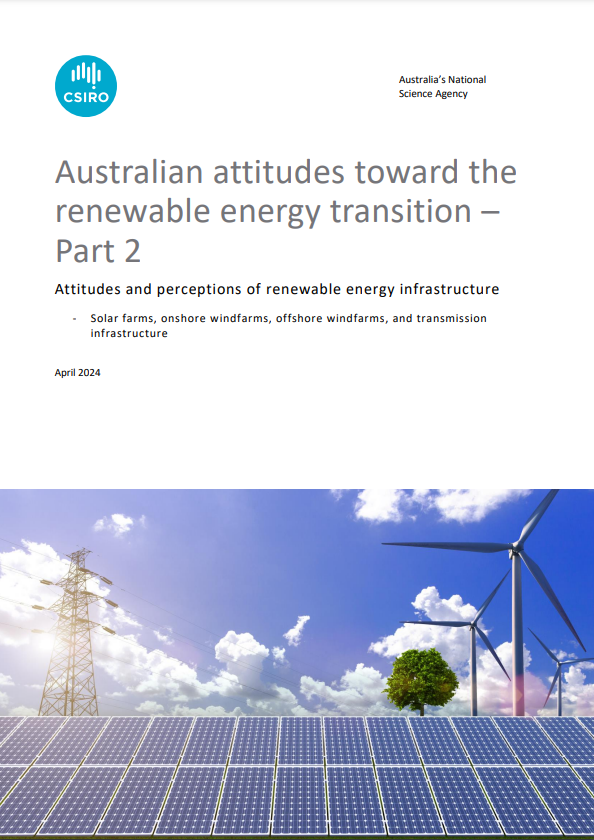
Australian attitudes toward the energy transition – Part 2: Attitudes and perceptions of renewable energy infrastructure – Solar farms, onshore windfarms, offshore windfarms, and transmission infrastructure
In 2023, CSIRO conducted one of Australia’s most comprehensive surveys of attitudes towards the energy transition and renewable infrastructure, surveying more than 6700 people in all states and territories, in capital cities and regional areas. Australians reported their top three priorities of the energy transition to be affordability, energy self-reliance, emissions reductions, with reliability being a close fourth.
ID:
3018
Authors:
McCrea, Rod ; Walton, Andrea ; Scovell, Mitchell ; Poruschi, Lavinia ; Gardner, John
Affiliations:
CSIRO
Year:
Month:
April
Resource Type:
Report
Subject:
Energy & infrastructure
Workforce / Skills / Education
Geographic Coverage:
Australia
Location:
Dutton Park, Brisbane
DOI:
https://doi.org/10.25919/g6cj-xv94
Australia is transitioning to a low carbon energy system, and transforming the way energy is generated, transmitted, stored, exported, and used. As domestic and international energy demand increases 1, many more large-scale renewable energy projects will be developed including solar farms, onshore and offshore windfarms, and associated transmission lines, while retiring existing coal electricity generation. Notwithstanding the local and wider economic and environmental benefits of transitioning to renewable energies, the extensive change to our energy system can also be challenging for local communities and the wider Australian public. In this context, it is important to understand, measure and monitor Australian attitudes and perceptions of the energy transition and large-scale renewable energy infrastructure with a view to informing and improving policies, practices and outcomes during the energy transition. In 2023, CSIRO undertook a large national survey in collaboration with the Department of Climate Change, Energy, the Environment and Water (DCCEEW) to: 1) better understand Australian perceptions of the energy transition, and 2) to capture public perspectives towards large-scale renewable energy infrastructure projects (solar farms, onshore and offshore windfarms, and associated transmission infrastructure).